Archive for the ‘hair loss medication’ Category
Monday, October 14th, 2013
Every now and then there is a new and exotic advertisement going around claiming it can help lessen or stop hair loss. When these advertisements are published in sources that seem reputable, the average consumer may start to believe them. At US Hair Restoration, many of our patients send in questions regarding how real these methods and devices are, and if they should give it a try. In reality however, there are only a few real-world techniques that can actually help hair loss:
- Hair transplantation – the only permanent solution for hair loss. Hair is moved from the permanent zone to the balding area.
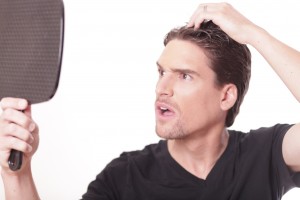
- Hair loss medications – Includes medications such as Finasteride and Minoxidil, which can slow down the hair loss process.
- Ketoconazole and Bimatoprost solutions – Two other solutions that appear to stimulate hair growth as one of their side effects.
- Herbel remedies – A few herbal remedies such as saw Palmetto that include DHT blocking properties.
Hair restoration has become a huge market, with over 60% of white males over the age of 50 having experienced some hair loss that requires treatment. By looking at these numbers, it is no wonder why so many of these companies are trying to capitalize on it. As a result, many devices are released, such as LED light hats, laser combs, magnetic devices, heating caps, and so on. Most of them claim that they can benefit the consumer and help hair loss, but these companies are only looking to make a quick dollar. Since they seem harmless and are relatively cheap, consumers are not hesitant to spend money and buy them if it will positively impact their appearance.
Since there are no regulations to put a stop to these types of advertisements, they will always be available on the market. The best advice is to seek a skilled hair transplant surgeon and disregard the other gimmicks.
Tags: finasteride, Hair loss medications
Posted in Beverly Hills hair transplant, Hair Loss, hair loss medication, hair loss products | No Comments »
Tuesday, February 21st, 2012
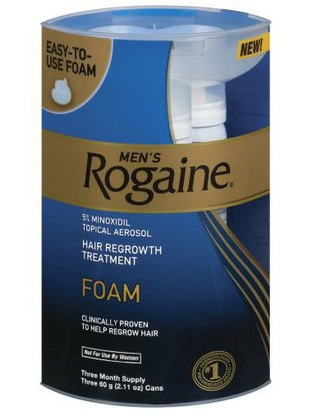 We receive a lot of questions at US Hair Restoration about the use of Minoxidil (Rogaine), and how it affects hair growth after a hair transplant procedure. There are mixed reviews people find on the internet through different websites and blogs about the Foam version of Rogaine. Some say it helps hair growth, others say it hinders, while some claim it does absolutely nothing. We receive a lot of questions at US Hair Restoration about the use of Minoxidil (Rogaine), and how it affects hair growth after a hair transplant procedure. There are mixed reviews people find on the internet through different websites and blogs about the Foam version of Rogaine. Some say it helps hair growth, others say it hinders, while some claim it does absolutely nothing.
Minoxidil (Rogaine) may be used after a hair transplantation on the newly transplanted area, for protecting the already existing hairs which are genetically predisposed to thinning. The hair grafts which are actually transplanted from the donor area require no medication for growth and maintain a permanent residence in the balding area. Those are the healthy hairs which are not affected by the hormone DHT (Dehydrotestosterone) which causes thinning and baldness.
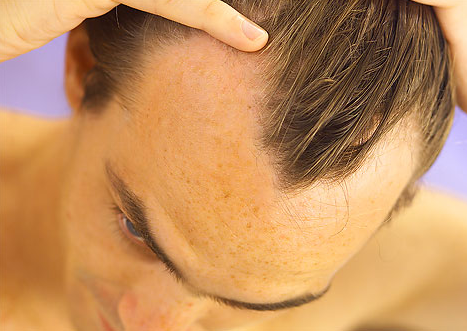 There may be some loss of existing native hair in the balding area due to shock loss, and for this we recommend Propecia for male patients to protect against. Propecia is proven to work better then Rogaine for the prevention of shock loss in men, and continues to have remarkable results in the patients who use the medication as directed. Unfortunately it does not work on women, but in these cases Rogaine does work and is a recommend option for the first few months after hair restoration surgery. There may be some loss of existing native hair in the balding area due to shock loss, and for this we recommend Propecia for male patients to protect against. Propecia is proven to work better then Rogaine for the prevention of shock loss in men, and continues to have remarkable results in the patients who use the medication as directed. Unfortunately it does not work on women, but in these cases Rogaine does work and is a recommend option for the first few months after hair restoration surgery.
Tags: female hair loss, finasteride, Male Hair Loss, minoxidil, propecia, rogaine, shock loss
Posted in after hair transplant, hair loss complications, hair loss medication, men hair restoration, women hair loss | No Comments »
Saturday, November 19th, 2011
 Here at US Hair Restoration, we often get phone calls and emails regarding different hair loss shampoos which propose major claims to successfully re-grow hair, or prevent hair loss. Some of these products maintain having ingredients such as Minoxidil, which actually is a proven hair loss medication. The setback of the majority of these products and claims has to do with the duration of time which they remain on the scalp. In order for them to work properly, they must remain on the scalp for a length of time which is needed to be absorbed into the skin. Here at US Hair Restoration, we often get phone calls and emails regarding different hair loss shampoos which propose major claims to successfully re-grow hair, or prevent hair loss. Some of these products maintain having ingredients such as Minoxidil, which actually is a proven hair loss medication. The setback of the majority of these products and claims has to do with the duration of time which they remain on the scalp. In order for them to work properly, they must remain on the scalp for a length of time which is needed to be absorbed into the skin.
Of all the topical hair loss products available today, Minoxidil is the most effective. At US Hair Restoration we recommend the simple use of it being applied twice a day, and then left on the scalp for maximizing its effectiveness. There are many products which advertise their contents having minerals and vitamins which have no true effectiveness, because the ingredients are not absorbed by the skin on the scalp. There are several brands to choose from with big claims, but Minoxidil is the only one which is FDA approved and actually proven to prevent hair loss.
Posted in hair loss medication, hair loss products | No Comments »
Sunday, July 10th, 2011
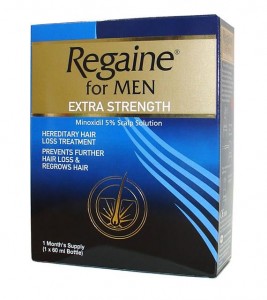 There are two proven medical treatments for hair loss , aside from hair transplantation surgery, Minoxidil (Rogaine) and Finasteride (Propecia). The hair growth action mechanisms for Minoxidil are not completely understood, three main suggested mechanisms are: There are two proven medical treatments for hair loss , aside from hair transplantation surgery, Minoxidil (Rogaine) and Finasteride (Propecia). The hair growth action mechanisms for Minoxidil are not completely understood, three main suggested mechanisms are:
1. Blood Vessels in the scalp which are impacted by Nitric oxide chemical agonists
2. Hyperpolarization of the cell membrane of follicles caused by potassium channel openers
3. The effect of nitric oxide conceivably due to Vasodilation
A recent study was conducted by Korea’s Kyungpook National University’s Department of Immunology which was published in The Journal of Dermatological Science. It revealed a new Mechanism of Minoxidil which activates the Beta-Catenin pathway in derma papilla cells, which is one of the two different cells which aids in the growth and development of hair. It was announced by those performing the research that this particular mechanism may possibly be the reason for the anagen prolongation effect.
The duration of growth in the anagen phase (time of continual growth) is what develops hair length. The researchers underscored the fact maintenance of the activity of Beta-Catenin for the dermal papilla cells (DPCs) aids hair follicles to actively grow. Minoxidil (Rogain) gives growth remedy for male pattern baldness which suggests it can enhance the growth phase in the life cycle of hair.
A mouse model was used for the study using 3% minoxidil for a ten day duration. Beta-Catenin responsive TCF reporter plasmid was used to transfect DPC’s. The results revealed the anagen phase was extended significantly after the use of minoxidil. The researchers came to the conclusion minoxidil prolongs the activating Beta-Catenin anagen phase in DPC’s and has the potential to be a primary pathway for hair growth or the prevention mechanism for hair loss.
A study like this helps to enhance our comprehension of hair loss and growth. Over time this can help the field of hair restoration providing more options to confront hair loss with greater sufficiency.
Tags: anagen, Dermal Papilla, DPC, growth phase, minoxidil, minoxidil mechanism, nitric oxide, vasodilation, β-catenin
Posted in hair loss medication, hair loss products, men hair restoration | No Comments »
Tuesday, November 30th, 2010
Q:
Good Afternoon Dr. Mohebi,
I recently was recommended to go on a medication for body building purposes by my trainer. The medication that I am planning on starting is called ANAVAR (an anabolic steroid). Because I am currently taking Propecia, as prescribed by you, I just wanted run ANAVAR by you to make sure it would be OK to take in conjuction with Propecia.
I appreciate all of your help, Thanks!
A:
Anavar (oxandrolone) is a weak androgen and is considered an anabolic steroid. It is indicated as adjunctive therapy to enhance weight gain after weight loss due to an extensive surgery, infectious disease, trauma and so on. Anavar has also been prescribed to some patients who for no reason fail to gain weight despite of  proper nutrition and work out schedules. It may also be used to maintain normal weight or to prevent the catabolism due to prolonged administration of corticosteroids. proper nutrition and work out schedules. It may also be used to maintain normal weight or to prevent the catabolism due to prolonged administration of corticosteroids.
There have been some online reports of hair loss with Anavar’s use and some exagerated hair loss reports in patients who take both Propecia (finasteride) and Anavar (oxandrolone) in conjunction. Although my personal searches in medical publications have never revealed any studies supporting this information, reports can be found online by its claimed users.
Overall, my general recommendation is: unless there is a strong medical indication for its use, people with any evidence of male patterned baldness should stay away from anabolic steroids. Although you may find some anabolic steroids over the counter, your family doctor should always be involved and aware of any anabolic steroids that you take as part of your body enhancing plan.
Tags: anabolic steriods and hair loss, Anavar, finasteride, hair loss, oxandrolone, propecia
Posted in hair loss complications, hair loss medication, hair loss products, hair transplant, men hair restoration, Uncategorized | No Comments »
Sunday, May 2nd, 2010
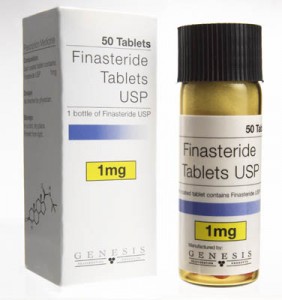 Q: Q:
I started the Propecia at the beginning of March (8 months ago), prior to the procedure last March. Should I still be on it?
A:
It is great to hear from you and I am glad you are happy with the result of your hair transplant. The final result of your hair may still get better up until one full year after your surgery if you allow your hair on the transplanted area to grow longer.
Finasteride as a hair loss medication was mostly prescribed for prevention of shock loss or losing native hair on the balding areas after a hair transplant. You have significant miniaturization on the front, top and crown area (90%-100%), which makes your preexisting hair on balding areas prone to further hair loss. Now that you had your transplanted hair grown, you can decide to stop Propecia. By doing that, you may risk losing your own hair on the balding area further (transplanted hair does not need Propecia for its growth) or you can continue taking the medication to increase the longevity of your preexisting hair on those areas.
Tags: after hair transplant, finasteride, propecia, shock loss
Posted in hair loss medication, hair loss products, hair transplant, men hair restoration | No Comments »
Tuesday, January 19th, 2010
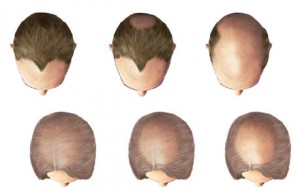
Q:
Hey Dr. Parsa Mohebi,
I’m grateful you took time out to see me on Saturday. The letter that gave a summary of what we talked about was very thorough and I just wanted to say thanks for that.
Since the last time we met, I did some of my own research and came up with a few queries:
1) When it comes to giving a name to my hair loss pattern, is Alopecia the correct way to describe it?
2) Would a Cortizone shot be an option for me?
3) Is laser therapy OK?
4) If I happen to use minoxidil, I’m wondering if it has to be 2% or would a higher percentage result in more hair growth and faster hair growth?
5) I was told to receive a complete medical evaluation, do you know of a doctor I can go to? I want someone I can trust.
Thanks again for taking the time to see me and also to accommodate my questions.
Sincerely,
Stephen
-
A:
Hello Stephen,
I’ve provided answers to your questions in chronological order.
1) When it comes to giving a name to my hair loss pattern, is Alopecia the correct way to describe it?
Alopecia, literally, would be defined as hair loss. There are many different types of alopecia or hair loss, such as male patterned alopecia or female patterned alopecia or alopecia cicatricial. I believe the pattern on your head is a male pattern since hair was lost in the frontal area as you kept hair on the donor area intact. This is the reason you may be a potential candidate for a hair transplant since your medical evaluation stated that you’re not medically treatable for hair loss.
2) Would a Cortizon shot be an option for me?
Absolutely not. But steroid shots are sometimes used for Alopecia Areata (AA), which is an autoimmune disorder. Alopecia Areata is a hair loss condition with patchy hair loss spots. Your condition is not Alopecia Areata.
3) Would you consider laser therapy?
I do not recommend laser therapy for hair loss in the form of laser comb or laser machines because of the lack of solid medical evidence that support their effectiveness at this time.
4) If I were to use Monoxidil, does it have to be 2% or a higher percentage would yield more and faster hair growth?
You can start with 2% and then you need to be re-evaluated in six to 12 months and a treatment plan might need to be adjusted at that time.
5) you recommended a complete medical evaluation, could you please recommend someone that you trust?
Any good internist or endocrinologist could follow through with the lab works that you need. Our letter includes the list of medical conditions that should be considered and lab works to rule out those women like you who have hair loss. You can share my letter with any good internist or endocrinologist and he or she should be able to follow through with your lab result and treat any treatable conditions that could possibly be found.
Have a great day,
Tags: alopecia areata, hair loss, hair loss pattern, hair loss treatment, laser therapy, laser therapy for hair loss, minoxidil
Posted in Bakersfield hair transplant, California hair transplant, hair loss medication, hair loss products, hair transplant, men hair restoration, Newport Beach hair transplant, Orange County hair transplant | No Comments »
Saturday, January 9th, 2010
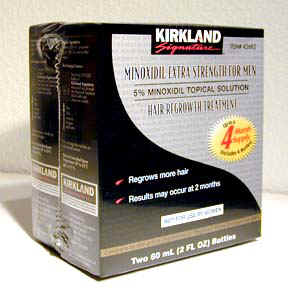
The possibility of restoring hair loss through alternative hair restoration options such as by using finasteride or Rogaine is an issue some people may be wondering about. Although hair restoration through these shortcut methods (without a hair transplant procedure) might be OK for some people, I can’t advocate it as a full-fledged solution. Advertisements may try to sway you into believing it is the answer.
Today, FDA has OK’d certain medications for hair loss prevention: finasteride and minoxidil. I must say, both are legitimate treatments, but they may have various indications for a male and female baldness pattern. But they are not, I repeat, they are not a cure-all solution for male patterned baldness, as other pharmacy industry experts may try to get you to believe.
A hair transplant ought to be thought of as a preventive agent, along with other alternativest. And also as vital part of a bigger plan on looking your best. A lot of men and women experience shock loss after a hair transplant surgery; these people are required to try preventative measures like finasteride, at least a month or two before the hair transplant.
Since hair restoration surgery started (in the 1990s) and until recently, when a hair restoration surgery was done, shock loss had been a significant issue hair transplant patients had to deal with.
But these days, a good majority of patients go on finasteride after a hair transplant surgery.
Tags: fda, finasteride, hair loss treatment, medical hair restoration, minixidil, prevention of balding, shock loss
Posted in Bakersfield hair transplant, California hair transplant, hair loss medication, hair loss products, Newport Beach hair transplant, Orange County hair transplant | No Comments »
Tuesday, January 5th, 2010
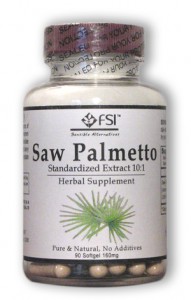
The fruit Serenoa Repens produces Saw Palmetto. Saw Palmetto is an extract of it. Saw Palmetto has plenty of fatty acids and phytosterols. Considered by many to be an alternative medicine for different kinds of indications, most notably benign prostatic hyperplasia (BPH).
People who are diagnosed with benign prostatic hyperplasia (BPH) have enlarged prostates have difficulty urinating to the point that patient may need prostate surgery for it.
The part Saw Palmetto plays in hair restoration has been well researched. Incredibly, for a lot of people, Saw Palmetto is a plant-based treatment which, up to a certain point, can reverse the hair loss process or delay hair loss. Saw Palmetto’s bio active ingredients block the conversion of testosterone into dihydrotestosterone (DHT).
So, on the hair follicle level, Saw Palmetto is able to halt the process of hair loss. In addition, Saw Palmetto promotes the increased thickness of miniaturized hair, helping them grow longer. In mechanism, the Saw Palmetto effect is sort of similar to finasteride or other DHT blockers. Available in oil extract, Saw Palmetto can be used topically on hair scalps or as pills to treat prostate enlargement.
Tags: balding prevention, benign prostatis hyperplasia, BPH, dht, dihydrotestostrone, finasteride, hair loss product, hair loss treatment, male patterned baldness, saw palmetto, Saw Palmetto Extract
Posted in California hair transplant, hair loss medication, hair loss products, men hair restoration, Newport Beach hair transplant, Orange County hair transplant | No Comments »
Monday, November 16th, 2009

Q:
Hey Doc:
My hair is as thin as the state of economy; I’m trying to figure out how to make it stronger. Two products I tried are, Chronostin, suggested by my barber; the other one was recommended to me by my psychiatrist: it’s called Minoxidil, Estradiol Vateral, Esopropyl Acohol.
I’d like to hear your expert advice on these products, doc?
Yours truly,
A:
I commend you for seeing a skin doctor. As part of your dermatologist’s diagnosis, I’m quite certain he took a look at you to see if there was miniaturization of hair leading to hair loss in men. Let me add that combining minoxidil with other hormonal medications hasn’t been proven to be a solution to hair loss. You were probably diagnosed with male pattern baldness and then the doctor decided to recommend it. Since that’s what happened, you might also want to try finasteride, a medication much more powerful compared to Minoxidil, based on a few research publications.
The other product, Chronostim, I don’t know what that is. But, being the dedicated doctor I am, I did some of my own research on it. Chronostim is a product that says it is able to act on a group of factors playing a part in hair loss. It has both morning and nighttime treatments.
It contains sabal enriched lauric acid (seborrhea regulating ), tocopherol Nicotinate (microcirculation stimulating, oxygenating bulbar), glycyrrhetinic Acide bta (reinforces the activity of 5-alpha ductase), excipient alcohol-silicone, perfumed- hypoallergenic.
Chronostim, called NIGHT, contains a semblance of Ruscus, enriched in Neoruscine (stimulating of the VEGF), Diguanosine traphosphate (GP4G – cellular stimulant), Piroctonolamine (cleansing, anti-irritant), excipient hydro-alcoholic, perfumed-hypoallergenic.
Clear as the Los Angeles smog, right? To give it to you straight, these products haven’t been proven in any way whatsoever to aid in the treatment of men’s hair loss.
May I be so bold to say, if I were in your shoes, I’d continue taking finasteride (Propecia), if your dermatologist is okay with it. However, if you continue to experience hair loss, a hair transplant would be the best answer.
Best,
Dr. Mohebi
Tags: chronostim, Chronostin, dermatologist, estradiol vateral, finasteride, hair loss product, male pattern hair loss, minoxidil, Propeica, skin doctor
Posted in hair loss medication, hair loss products, hair transplant, men hair restoration | No Comments »
|
|






 proper nutrition and work out schedules. It may also be used to maintain normal weight or to prevent the catabolism due to prolonged administration of corticosteroids.
proper nutrition and work out schedules. It may also be used to maintain normal weight or to prevent the catabolism due to prolonged administration of corticosteroids.



